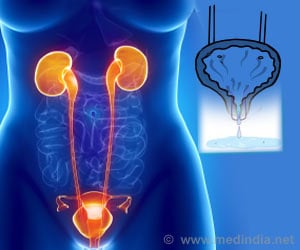Mark Thomas, MD, an assistant professor and transplant surgeon at the University of Cincinnati (UC) is credited with performing the first pediatric laparoscopic liver surgery.
Mark Thomas, MD, an assistant professor and transplant surgeon at the University of Cincinnati (UC) is credited with performing the first pediatric laparoscopic liver surgery. This procedure is a specialized surgery that removes tumors in the liver without first performing an incision. The operation was done on a 2-year-old boy with liver cancer at La Raza Pediatric Medical Hospital in Mexico City on May 24.
Liver cancer is rare in children--less than 150 cases are diagnosed each year compared to more than 18,000 in adults--so the disease often misdiagnosed as constipation, food intolerance or anorexia until it is in an advanced and difficult-to-treat stage.This patient's symptoms had been dismissed as such for several months before physicians confirmed he had hepatoblastoma of the liver, a type of cancer that starts in the organ's cells (hepatocytes) and develops into one or multiple tumors. Thomas was invited to the La Raza Pediatric Medical Hospital to perform the patient's surgery and teach two lectures on the specialized minimally invasive procedure.
Laparoscopic (minimally invasive) surgery is a method of operating inside the abdomen through small, tube-like ports using a fiber-optic light source, camera and specialized instruments. Known as laparoscopic liver resection, this procedure requires incisions so small (about three-inches) that they leave only minimal scarring.
Two months post-surgery, the patient is doing well and is expected to have a full recovery after several additional rounds of chemotherapy.
Thomas says the procedure is a safe, effective alternative to traditional "open" surgery for liver cancer--which requires up to a 30-inch incision. It also is available for patients with advanced liver disease who cannot tolerate the standard operation. The minimally invasive laparoscopic approach is most often used to remove liver tumors and treat other liver diseases.
"Laparoscopic liver resection results in less pain and faster recovery times for patients," Thomas explains. "Adult patients can usually start eating again a day after surgery and are back to work within one or two weeks."
Advertisement
Thomas says the laparoscopic liver procedure has the same success rates as traditional open surgery and the patient usually goes home within two days.
Advertisement
Primary liver cancer--which grows from within the organ as opposed to spreading there from another area of the body--is rare. In adults, the most common type of primary liver cancer is hepatocellular carcinoma (HCC) and in pediatric patients it is hepatoblastoma. Both develop from hepatocytes and can occur as one or multiple tumors. HCC accounts for 80 percent of all primary liver cancers. Colorectal, breast and gastric cancers also commonly spread to the liver.
To perform the laparoscopic liver procedure, carbon dioxide gas is pumped into the patient's abdomen to increase the operative area and improve visualization of the tumor. The surgeon then makes two to four small incisions on the right side of the rib cage to accommodate the laparoscope, a tiny "telescope" equipped with a camera, and other specialized surgical instruments. The surgeon then severs and ties off tumor's blood supply, cuts out the tumor itself, places it inside a sealed bag, and removes it through one of the incisions.
"The liver is a self-healing organ," explains Thomas, "so once the cancerous tumor is removed the area typically heals within two to four weeks."
Research suggests that cirrhosis, a condition that results in scarring of the liver tissue and long-term hepatitis B and C infections, can increase the risk for liver cancer. People who abuse alcohol, smoke cigarettes or are obese are also at an increased risk for the disease.
Thomas and his team perform about 250 laparoscopic liver cases a year. According to a literature review, there are no published reports of laparoscopic liver resection in a pediatric patient with cancer.
"Only a handful of centers in the world perform the number of specialized laparoscopic liver surgeries that we do in Cincinnati," adds Thomas.
The American Cancer Society estimates that about 18,000 new cases of primary liver cancer and bile duct cancer will be diagnosed in the United States during 2006. Because of a higher incidence rate of hepatitis B and C, liver cancer is more common in developing countries in Africa and East Asia than in the United States.
Source: Eurekalert











